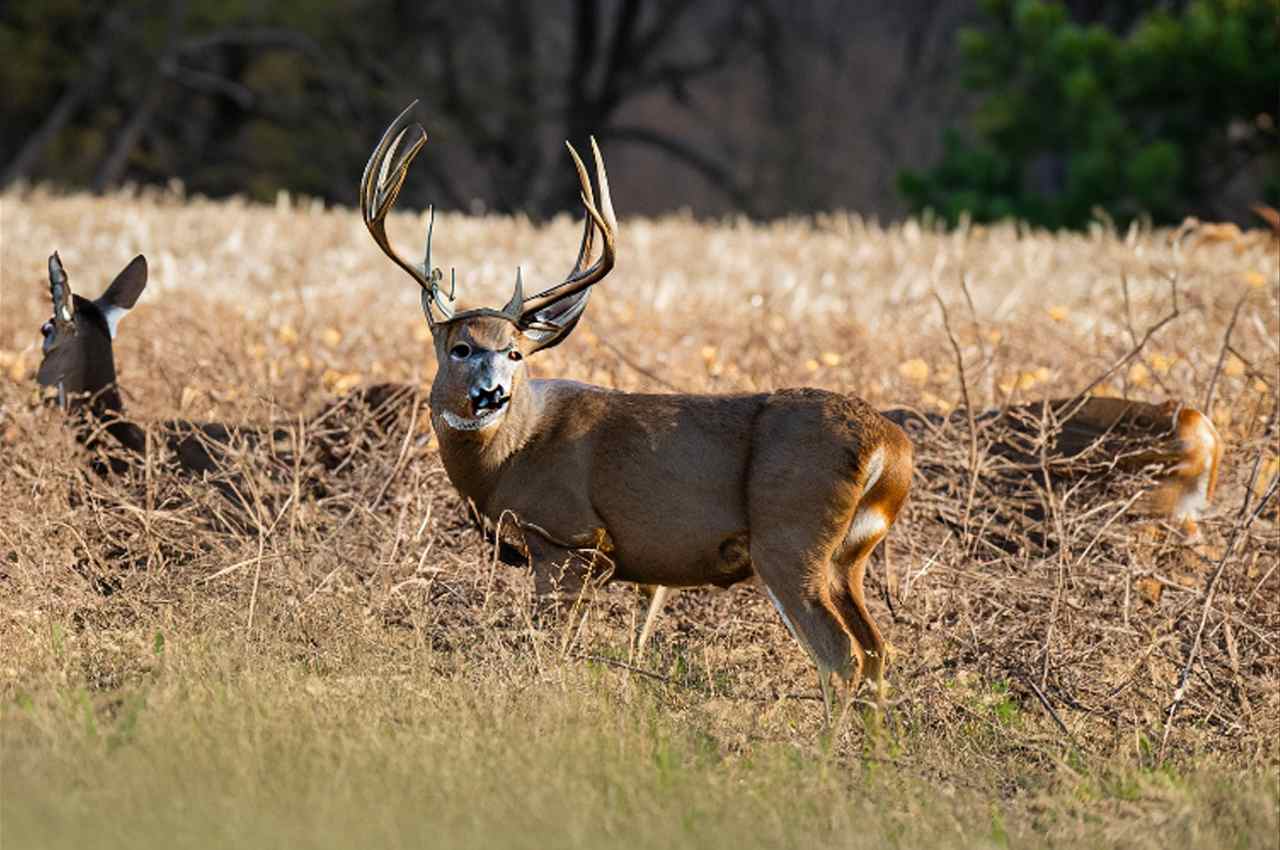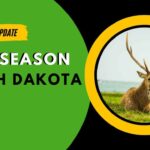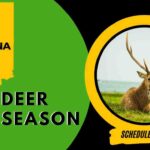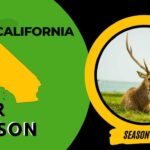Kansas has plenty of opportunity for hunters to capture deer across multiple seasons and with various sorts of equipment. To help you have a great time, this guide includes important information about dates, laws, licensing requirements, bag restrictions, and more.
Kansas Deer Hunting Season Dates
From early September through January, the state offers specialized games for different hunting equipment.
| Youth and Disability | September 2 – September 10 |
| Muzzleloader | September 11 – September 24 |
| Archery | September 11 – December 31 |
| Regular Firearm | November 29 – December 10 |
| Extended Archery Whitetail Antlerless-Only | January 22 – January 31 (Unit 19 only) |
| Firearm Whitetail Antlerless-Only | |
| Pre-Rut | October 7 – October 9 |
| Extended – 1st Segment | January 1 – January 7, 2024 (Units 6, 8, 9, 10, 17) |
| Extended – 2nd Segment | January 1 – January 14 (Units 1, 2, 3, 4, 5, 7, 11, 14, 16) |
| Extended – 3rd Segment | January 1 – January 21 (Units 10A, 12, 13, 15, 19) |
| Fort Riley Military Base | Specific dates |
| Fort Leavenworth Military Base | |
Regulations
Regulations governing license, hunter education, corpse tagging, and general hunting guidelines apply. Here are several important rules:
- Both local and nonresident hunters need the appropriate licenses. There are special, reduced licenses available.
- Anyone born after July 1, 1957, must possess a Hunter education certification.
- Private lands need written authorization. Public road hunting is governed by unique restrictions.
- Game regulations include issues including gifting or selling meat, using a car or drone, or making an electronic call.
- It is necessary to properly tag corpses and keep the tag on them until the meat is prepared.
- To avoid wasting game, hunters must make an attempt to recover fallen deer.
- Seasonal requirements dictate the sort of equipment to be utilized.
- For muzzleloaders and firearms, orange attire is needed.
- Officers have the right to examine licenses, tools, and harvested game.
Bag Limits
| Permit Type | Bag Limit |
| Resident Firearm (either species/sex) | One deer of any type |
| Muzzleloader | |
| Archery | |
| Property Owner/Maintainer | |
| Antlerless (any type) | One antlerless of any species |
| Nonresident Firearm | One antlered and one antlerless whitetail |
| Antlerless (does or fawns without antler protrusions) | Check unit limits |
Note that only does or fawns lacking antler protrusions are eligible for antlerless licenses. Check the unit limits on your permit as well.
Hunting Licenses
- Kansas citizens must have a resident license in order to hunt small game and waterfowl statewide, unless they are excluded.
- For non-residents 16 years of age and older without exceptions, a hunting license is necessary. more restrictions than resident licenses.
- For people ages 16 and above who have not yet finished hunter instruction, an apprentice license is available.
- License at a lower cost for Kansas citizens 15 years of age or younger.
- Senior persons, handicapped veterans, and active military members may be eligible for special licenses.
- Licenses: In addition to a regular hunting license, the proper deer licenses must be acquired.
Annual Hunting License
Residents: Unless exempted by Kansas law, all resident hunters between the ages of 16 and 74 must possess a resident hunting license.
Nonresidents: No matter their age, nonresident hunters must get a nonresident license.
Preference Points
Resident: A resident hunter who chooses not to participate in the current period may pay $12.50 for a preference point that will be used in a future drawing for a firearm-either-species, either-sex deer permit.
Non-resident: A non-resident hunter who wishes to forego the current schedule may buy a preference point that will be used in a future drawing for a white-tailed ticket.
Mule Deer Stamp Fee
Price: $152.50 (plus the above-mentioned nonresident white-tailed permit price).
An application for the Mule Deer Stamp must be submitted by a nonresident during the April application period. The applicant’s White-tailed Archery or Muzzleloader Permit becomes an Either-species/Either-sex Archery or Muzzleloader Permit if it is pulled. There is no preference point system for this Mule Deer Stamp draw. If unsuccessful, the hunter will be given the permit for the successful draw unit for white-tailed deer taken with an arrow or muzzleloader.
Where to Hunt Deer in Kansas
Deer hunting is permitted on a lot of public property in Kansas:
Walk-in Hunting Access areas: The WIHA program is active on more than a million acres of private property. need a permission.
Wildlife Management Areas: Nearly 400 WMAs, ranging in size from 40 to over 10,000 acres, are designated as wildlife management areas.
State Parks: Some state parks allow limited deer shooting, although there are limits.
Federal areas: Hunting is permitted on federal lands such as national wildlife refuges, Army Corps lakes, and national forests.
Particularly for non-resident hunters, public areas provide good possibilities.
Field Dressing and Processing
- Use latex gloves and handle brain and spinal tissue as little as possible.
- Covering meat and washing your equipment in vinegar water will keep them clean.
- Quickly calm down the deer and steer clear of dragging in mud or debris.
- Before your hunt, understand the right field dressing methods by watching video lessons.
Many hunters do their own venison processing. Some people butcher at meat processors. Treat all meat with hygiene. The meat may be used in a variety of dishes by grinding it or creating jerky out of it.
Apply for Your Kansas Deer Permit
Applications start in April! Most licenses in Kansas can be applied for by both residents and non-residents.
- The application deadline for muzzleloader and weapon licenses is June 9, 2023.
- Applications for whitetail firearms from non-residents cost $25.
- After the draw, unused permits could be distributed on a first-come, first-served basis.
- Through October 1, 2023, archery licenses may be acquired over the counter.
- If the quota allows, antlerless permits are limitless after the draw.
- Create an account and submit your permit applications online at https://www.kshuntfishcamp.com. So that you don’t miss out, mark your calendar.
Frequently Asked Questions
When does the deer hunting season open in Kansas?
The youth/disability season opens first on September 2 in Kansas. On September 11, the muzzleloader and archery will thereafter begin. So, the opening period is in early September.
What are the different segments of deer season in Kansas?
In Kansas, there are many prolonged firearm antlerless segments as well as muzzleloader, archery, pre-rut, and normal firearm antlerless seasons. September through December is the longest part of the archery game. Each section is permitted with a different sort of equipment.
How many deer can I harvest in Kansas?
Bag restrictions vary by permit type. For instance, you are permitted to harvest one deer of any species with a resident firearm either-species/either-sex permit. You are permitted to take one antlered and one antlerless with non-resident whitetail firearm licenses. Does and fawns lacking antler protrusions are the only animals eligible for antlerless permits.
Where can I find information on Kansas deer hunting regulations?
Each year, the Kansas Department of Wildlife and Parks releases an overview of the laws that govern deer hunting. License requirements, hunter education, bag limits, equipment limitations, corpse tagging procedures, and other issues are mentioned.
How can I hunt deer on public land in Kansas?
It is permitted on several public properties in Kansas, including Wildlife Management locations, certain state parks, and federal public lands. These sites include Walk-In Hunting Access locations. Research areas open close to the hunting location.
When should I apply for Kansas deer hunting permits?
The application period begins in April and closes on June 9. The HuntFishKS online application site accepts online applications. After the draw, further permits can be available.
What precautions should I take regarding chronic wasting disease in Kansas?
The KDWPT recommends not consuming meat from deer that test positive for CWD. Use safety measures, such as gloves while field dressing, and avoid touching brain or spinal tissue altogether. If harvesting in a CWD-affected region, get it tested and debone the meat.
- California Deer Hunting Guide: Seasons, Rules, Permits, and More - 26 June 2024
- Arkansas Deer Season 2024 [Schedules, Licenses, Bag Limits & More!] - 26 June 2024
- 2024 Arizona Deer Season New Dates & Rules! - 25 June 2024




